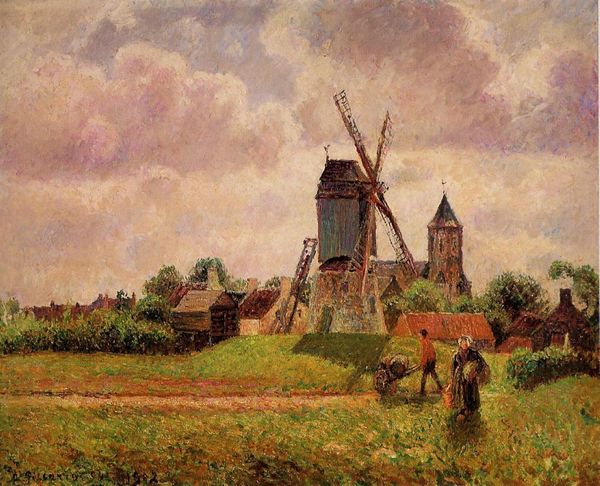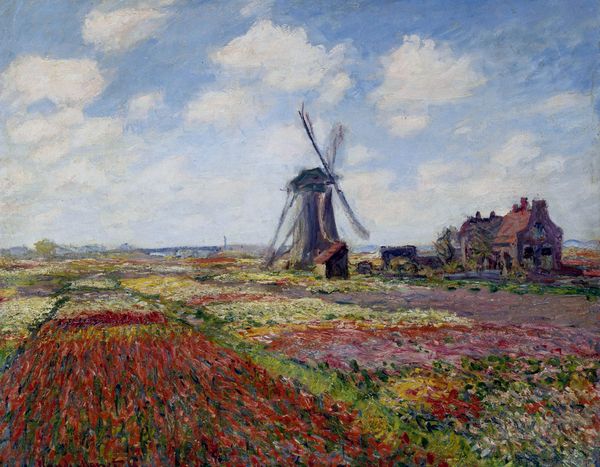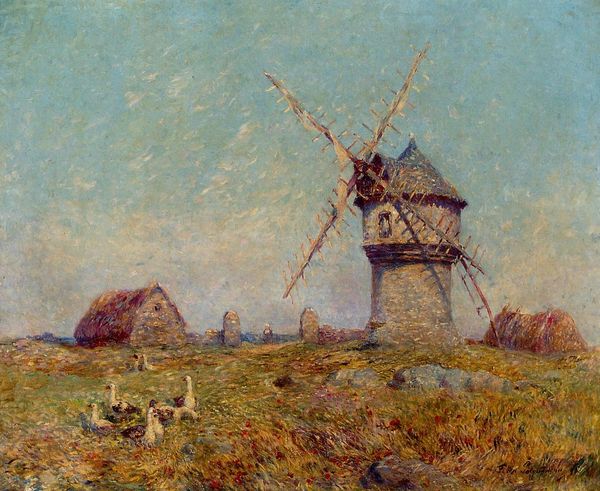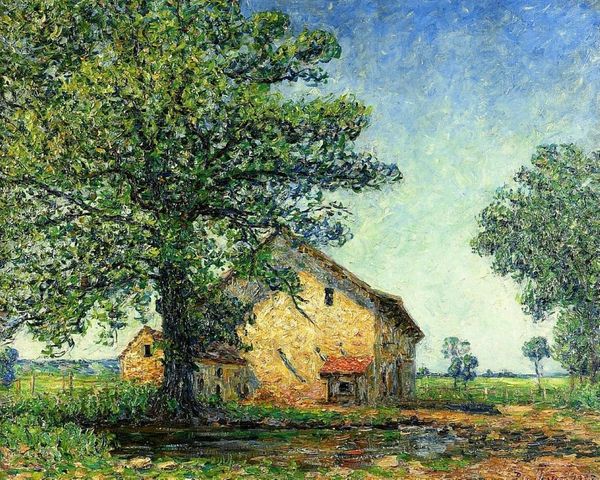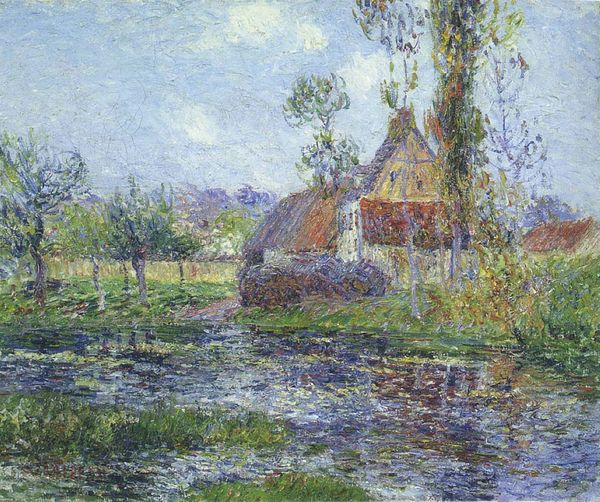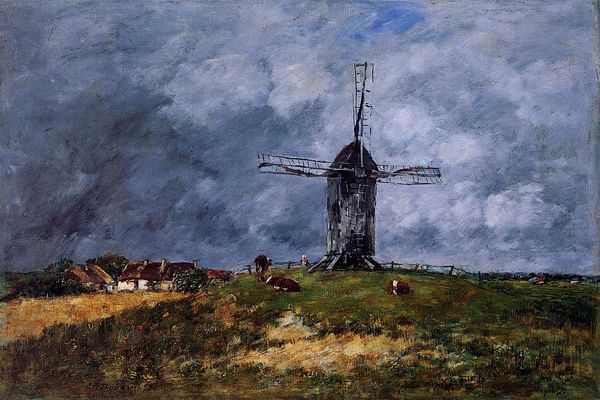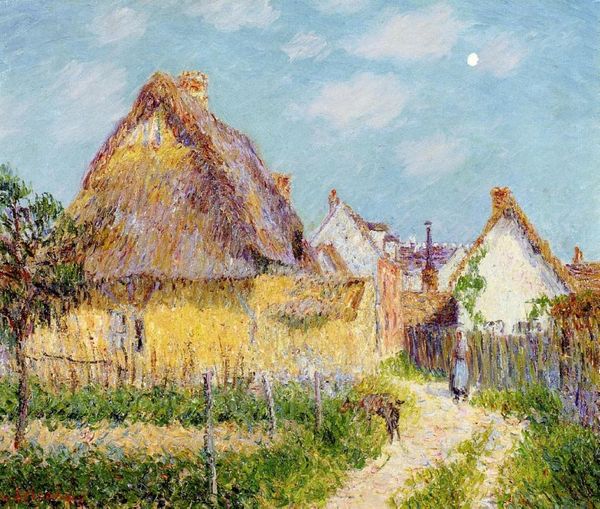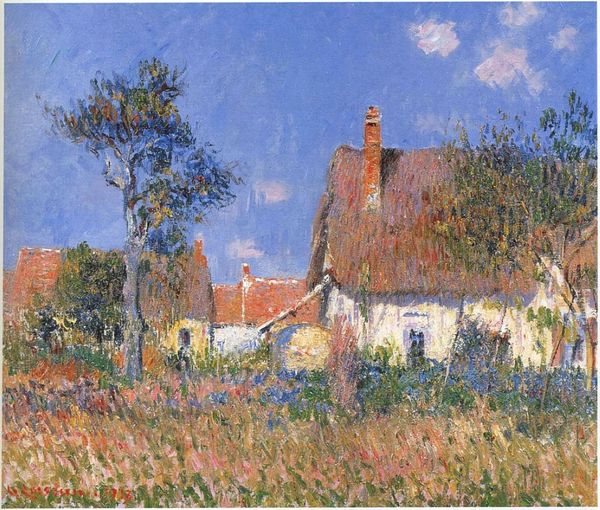
Dimensions: 66 x 78 cm
Copyright: Public domain
Editor: So, here we have "Balinovo. Landscape," painted in 1936 by Nikolay Bogdanov-Belsky, using oil on canvas. I'm immediately drawn to the textured brushstrokes and the bright, airy feel. What stands out to you as you examine this landscape? Curator: Initially, the structural relationship between the forms captivates. Note how the windmill, the buildings, and even the clouds each have definitive lines that define their overall presence. Consider how Bogdanov-Belsky employed the color palette; is the arrangement a realistic interpretation, or rather an expression of his emotional experience? Editor: I see what you mean about the structures; they are all simple, solid shapes. It does have a dreamlike quality, not exactly realistic, especially the light. I suppose that means the artist wasn’t going for objective realism here? Curator: Realism is clearly at play in the depicted environment, but not without its subtleties. Examine the painterly approach of light as it defines form. How does Bogdanov-Belsky capture our gaze and create a structured arrangement to emphasize specific forms within the two-dimensional picture plane? Editor: I see how the winding road leads our eyes towards the windmill, which is placed high up, like a beacon. The colours are actually quite muted, maybe that lends itself to a certain type of emotional realism. Curator: Indeed. Colour relations play an interesting role, too, in the compositional design. Let’s also remember this work is painted en plein air, further highlighting this point. The painting uses structured painterly strokes and simple arrangements. It focuses less on reflecting actual naturalistic scenes and prioritizes the interplay of hues, arrangement, and forms to generate specific atmospheric affects and unique emotional resonance within viewers. Editor: So, by carefully considering the arrangement of shapes, colours and applying particular painterly methods, an artwork can convey emotional depth as effectively as reflecting external reality. Thanks, I learned so much! Curator: My pleasure. The painting's strength emerges from the structured interplay between form and light, proving invaluable to art historical understanding.
Comments
No comments
Be the first to comment and join the conversation on the ultimate creative platform.
